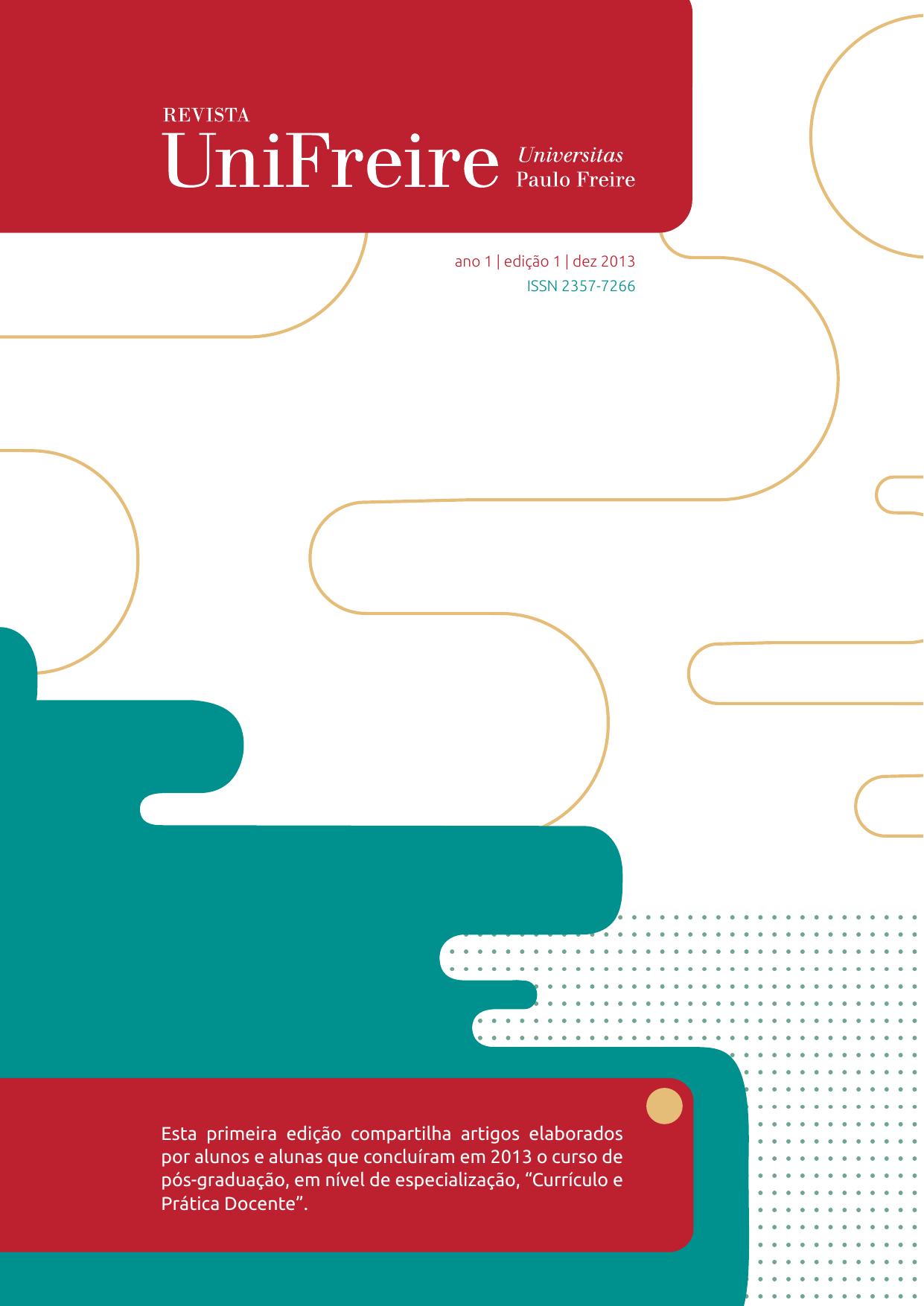INCLUSION AND “FELICIDADANIA”
challenges of an inclusive school with quality
Keywords:
Education, Inclusion, Diversity, FelicidadaniaAbstract
This article deals with the relationship curriculum and school enrollment, focusing on aspects that determine a good learning situation for intellectually disabled students enrolled in regular education in the city of Osasco met in Room Care Specialized Education (SAEE) a Municipal School of Basic Education (EMEF .) Aimed to reflect on the role of the teacher and the school as a whole, to ensure disabled students quality education to understand that the work can not be confined to ensuring a favorable environment for acquiring knowledge and building interpersonal relationships sound but essentially build conditions for the child to feel happy and accepted by the teacher, your group class and all school. Socializing and analyze two cases of inclusion, experienced in teaching network in the city of Osasco, that demonstrate how the participation of everyone in the school is of great importance to the acquisition of knowledge by the student, provided that there is effective monitoring and support in the performance of teacher, to ensure meaningful learning. Materials and environmental barriers are being gradually considered and met, but the attitudinal barriers still part of everyday life. Are barriers of consciousness or unconsciousness, the not knowing, prejudice, indifference, fear of difference, of difference. The fact that a child born with disabilities, is not determinant and determinant of your future. She is full of learning because the man is a historical being and becomes human because humans learn from others.
References
BRASIL. Ministério da Educação e do Desporto. Secretaria de Educação Fundamental. Parâmetros curriculares nacionais: terceiro e quarto ciclos do ensino fundamental: introdução aos parâmetros curriculares nacionais. Brasília: MEC/SEF, 1998.
________. Resolução CNE/CEB nº 4/2009. Diário Oficial da União, Brasília, 5 out. 2009. Disponível em: <http://www.mec.gov.br>. Acesso em: 26 de jul.2013
FERREIRA, Isabel Neves. Caminhos do aprender: uma alternativa educacional para criança portadora de deficiência mental. Brasília: CORDE, 1993.
FREIRE, Paulo. Pedagogia do oprimido. Rio de Janeiro: Paz e Terra,1987.
MANTOAN, Maria Tereza Eglér. Educação escolar dos deficientes mentais: problemas para a pesquisa e o desenvolvimento. Cadernos CEDES, v. 19, n. 46, p. 01-14,1998.
MITTLER, Peter. Educação inclusiva: contextos sociais. Porto Alegre: Artmed, 2003.
OLIVEIRA, Marinalva de et al. (Orgs.). Reorientação curricular da educação infantil e do ensino fundamental. São Paulo: Editora e Livraria Instituto Paulo Freire, 2011.
OSASCO. Núcleo de Ensino Inclusivo. Portaria nº 27/2007. Dispõe sobre a organização das Salas de Apoio à Inclusão (SAI) do Município de Osasco, e dá outras providências. Imprensa Oficial do Município de Osasco, 31 mai. 2007. Disponível em: <http://www.iomo.osasco.sp.gov.br/2007/ed542.pdf>. Acesso em: 25.jul.2013.
_______. Secretaria Municipal de Educação. Projeto das salas de atendimento educacional especializado da rede de educação municipal de Osasco. Imprensa Oficial do Município de Osasco, 2008.
_______. Secretaria Municipal de Educação. Lei nº 4300/2009. Dispõe sobre o Plano Municipal de Educação: diretrizes, objetivos e metas educacionais. São Paulo: Editora e Livraria Instituto Paulo Freire, 2009.
_______. Portaria nº 07/2011. Dispõe sobre a Organização das Salas de Atendimento Educacional Especializado (SAEE), do Município de Osasco. Imprensa Oficial do Município de Osasco, 2011.
RIOS, Terezinha Azeredo. Compreender e ensinar: por uma docência da melhor qualidade. São Paulo: Cortez, 2010. 342
SILVA, Tomaz Tadeu da. Documento de identidade: uma introdução às teorias de currículo. 2 ed. Belo Horizonte: Autêntica, 2007.
UNESCO. Declaração de Salamanca sobre princípios, política e práticas na área das necessidades educativas especiais. [S.l]: UNESCO, 1994. Disponível em: <http://portal.mec.gov.br/seesp/arquivos/pdf/salamanca.pdf>. 03 maio 2013.


